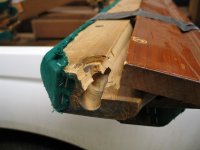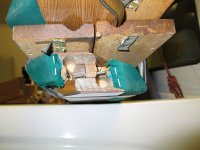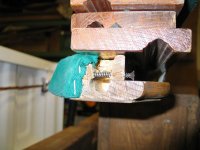Greetings,
Let's just say, hypothetically speaking, that you had come into possession of a used pool table where the subrails looked like those in these images. What would, or could, you do about it? Is it possible to saw away the subrail from the rail top and glue on a new subrail?
Thanks.
- s.west
p.s. Is this an unusual occurrence? That is, where the pocket ears have broken down, or torn off, part of the subrail?
p.p.s. These pictures may be a little confusing. You are looking at the ends two different bundles of rails and blinds...
Let's just say, hypothetically speaking, that you had come into possession of a used pool table where the subrails looked like those in these images. What would, or could, you do about it? Is it possible to saw away the subrail from the rail top and glue on a new subrail?
Thanks.
- s.west
p.s. Is this an unusual occurrence? That is, where the pocket ears have broken down, or torn off, part of the subrail?
p.p.s. These pictures may be a little confusing. You are looking at the ends two different bundles of rails and blinds...
Attachments
Last edited:



